2. Lenneberg EH. The biological foundations of language. Hosp Pract. 1967; 2:59–67.
3. Johnson JS, Newport EL. Critical period effects in second language learning: the influence of maturational state on the acquisition of English as a second language. Cogn Psychol. 1989; 21:60–99.
4. Korean Society of Magnetic Resonance in Medicine. Magnetic resonance imaging. Seoul: Ilchokak;2008.
5. Chee MW, Caplan D, Soon CS, Sriram N, Tan EW, Thiel T, et al. Processing of visually presented sentences in Mandarin and English studied with fMRI. Neuron. 1999; 23:127–137.
6. Illes J, Francis WS, Desmond JE, Gabrieli JD, Glover GH, Poldrack R, et al. Convergent cortical representation of semantic processing in bilinguals. Brain Lang. 1999; 70:347–363.
7. Hernandez AE, Martinez A, Kohnert K. In search of the language switch: an fMRI study of picture naming in Spanish-English bilinguals. Brain Lang. 2000; 73:421–431.
8. Hernandez AE, Dapretto M, Mazziotta J, Bookheimer S. Language switching and language representation in Spanish-English bilinguals: an fMRI study. Neuroimage. 2001; 14:510–520.
9. Kim KH, Relkin NR, Lee KM, Hirsch J. Distinct cortical areas associated with native and second languages. Nature. 1997; 388:171–174.
10. Marian V, Spivey M, Hirsch J. Shared and separate systems in bilingual language processing: converging evidence from eyetracking and brain imaging. Brain Lang. 2003; 86:70–82.
11. Wartenburger I, Heekeren HR, Abutalebi J, Cappa SF, Villringer A, Perani D. Early setting of grammatical processing in the bilingual brain. Neuron. 2003; 37:159–170.
12. Hull R, Vaid J. Bilingual language lateralization: a meta-analytic tale of two hemispheres. Neuropsychologia. 2007; 45:1987–2008.
13. Cho JM, Ryoo JW, Choi DS, Shin TB, Chung SH, Kim JE, et al. Functional MRI of multilingual subjects. J Korean Soc Radiol. 2009; 61:351–358.
14. Woodcock RW, Mather N, Schrank FA. Woodcock-Johnson III diagnostic reading battery. Itasca: Riverside Publishing Company;2004.
15. Abutalebi J, Green DW. Control mechanisms in bilingual language production: neural evidence from language switching studies. Lang Cogn Process. 2008; 23:557–582.
16. Rodriguez-Fornells A, De Diego Balaguer R, Münte TF. Executive control in bilingual language processing. Lang Learn. 2006; 56:133–190.
17. Braun AR, Guillemin A, Hosey L, Varga M. The neural organization of discourse: an H2 15O-PET study of narrative production in English and American sign language. Brain. 2001; 124:2028–2044.
18. Wise RJ, Greene J, Büchel C, Scott SK. Brain regions involved in articulation. Lancet. 1999; 353:1057–1061.
19. Booth JR, Wood L, Lu D, Houk JC, Bitan T. The role of the basal ganglia and cerebellum in language processing. Brain Res. 2007; 1133:136–144.
20. Poeppel D, Hickok G. Towards a new functional anatomy of language. Cognition. 2004; 92:1–12.
21. Friederici AD. Towards a neural basis of auditory sentence processing. Trends Cogn Sci. 2002; 6:78–84.
22. Keller TA, Carpenter PA, Just MA. The neural bases of sentence comprehension: a fMRI examination of syntactic and lexical processing. Cereb Cortex. 2001; 11:223–237.
23. Sakai KL, Miura K, Narafu N, Muraishi Y. Correlated functional changes of the prefrontal cortex in twins induced by classroom education of second language. Cereb Cortex. 2004; 14:1233–1239.
24. Chee MW, Hon N, Lee HL, Soon CS. Relative language proficiency modulates BOLD signal change when bilinguals perform semantic judgments. Blood oxygen level dependent. Neuroimage. 2001; 13:1155–1116.
25. Hernandez AE. The bilingual brain. Oxford: Oxford University Press;2013.
26. Davey J, Thompson HE, Hallam G, Karapanagiotidis T, Murphy C, De Caso I, et al. Exploring the role of the posterior middle temporal gyrus in semantic cognition: integration of anterior temporal lobe with executive processes. Neuroimage. 2016; 137:165–177.
27. Noonan KA, Jefferies E, Visser M, Lambon Ralph MA. Going beyond inferior prefrontal involvement in semantic control: evidence for the additional contribution of dorsal angular gyrus and posterior middle temporal cortex. J Cogn Neurosci. 2013; 25:1824–1850.
28. Just MA, Carpenter PA, Keller TA, Eddy WF, Thulborn KR. Brain activation modulated by sentence comprehension. Science. 1996; 274:114–116.
29. Carpenter PA, Just MA, Keller TA, Eddy W, Thulborn K. Graded functional activation in the visuospatial system with the amount of task demand. J Cogn Neurosci. 1999; 11:9–24.
30. Grasby PM, Frith CD, Friston KJ, Simpson J, Fletcher PC, Frackowiak RS, et al. A graded task approach to the functional mapping of brain areas implicated in auditory-verbal memory. Brain. 1994; 117:1271–1282.
31. Rypma B, Prabhakaran V, Desmond JE, Glover GH, Gabrieli JD. Load-dependent roles of frontal brain regions in the maintenance of working memory. Neuroimage. 1999; 9:216–226.
32. Fridriksson J, Morrow L. Cortical activation and language task difficulty in aphasia. Aphasiology. 2005; 19:239–250.
33. Hasegawa M, Carpenter PA, Just MA. An fMRI study of bilingual sentence comprehension and workload. Neuroimage. 2002; 15:647–660.
34. Brodtmann A, Puce A, Darby D, Donnan G. Regional fMRI brain activation does correlate with global brain volume. Brain Res. 2009; 1259:17–25.
35. Maguire EA, Gadian DG, Johnsrude IS, Good CD, Ashburner J, Frackowiak RS, et al. Navigation-related structural change in the hippocampi of taxi drivers. Proc Natl Acad Sci U S A. 2000; 97:4398–4403.
36. Narr KL, Woods RP, Thompson PM, Szeszko P, Robinson D, Dimtcheva T, et al. Relationships between IQ and regional cortical gray matter thickness in healthy adults. Cereb Cortex. 2007; 17:2163–2171.
37. Manard M, Bahri MA, Salmon E, Collette F. Relationship between grey matter integrity and executive abilities in aging. Brain Res. 2016; 1642:562–580.
38. Takeuchi H, Taki Y, Nouchi R, Yokoyama R, Kotozaki Y, Nakagawa S, et al. Global associations between regional gray matter volume and diverse complex cognitive functions: evidence from a large sample study. Sci Rep. 2017; 7:10014.
39. Kharitonova M, Martin RE, Gabrieli JD, Sheridan MA. Cortical gray-matter thinning is associated with age-related improvements on executive function tasks. Dev Cogn Neurosci. 2013; 6:61–71.
40. Caplan R, Levitt J, Siddarth P, Wu KN, Gurbani S, Shields WD, et al. Language and brain volumes in children with epilepsy. Epilepsy Behav. 2010; 17:402–407.
41. Narr KL, Woods RP, Lin J, Kim J, Phillips OR, Del'Homme M, et al. Widespread cortical thinning is a robust anatomical marker for attention-deficit/hyperactivity disorder. J Am Acad Child Adolesc Psychiatry. 2009; 48:1014–1022.
42. Batty MJ, Liddle EB, Pitiot A, Toro R, Groom MJ, Scerif G, et al. Cortical gray matter in attention-deficit/hyperactivity disorder: a structural magnetic resonance imaging study. J Am Acad Child Adolesc Psychiatry. 2010; 49:229–238.
43. Joo EY, Tae WS, Lee MJ, Kang JW, Park HS, Lee JY, et al. Reduced brain gray matter concentration in patients with obstructive sleep apnea syndrome. Sleep. 2010; 33:235–241.
44. Rogers JC, De Brito SA. Cortical and subcortical gray matter volume in youths with conduct problems: a meta-analysis. JAMA Psychiatry. 2016; 73:64–72.
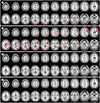
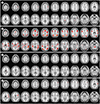
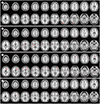



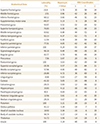




 PDF
PDF ePub
ePub Citation
Citation Print
Print





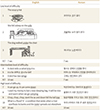


 XML Download
XML Download